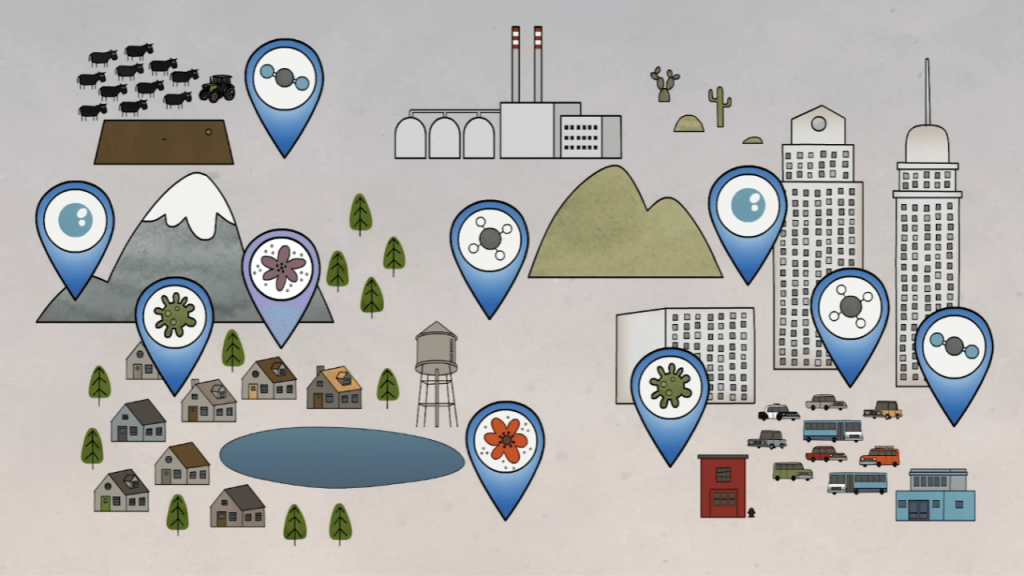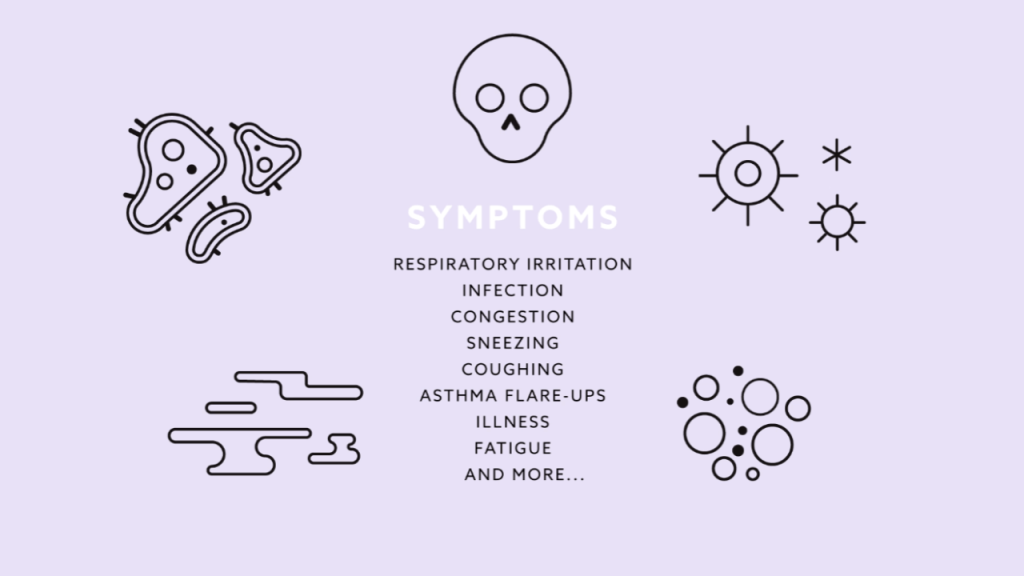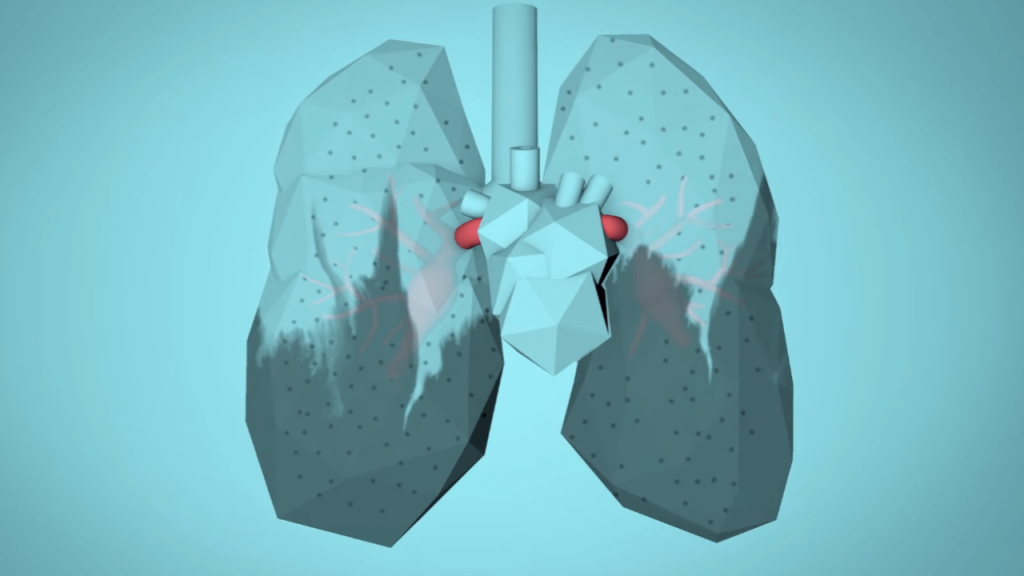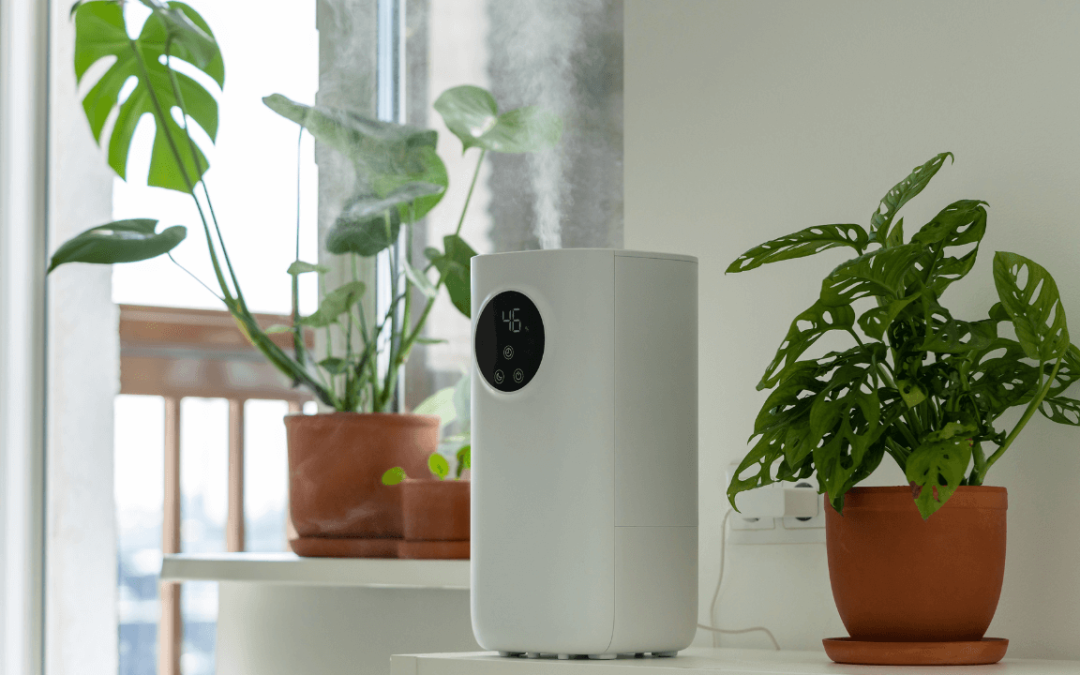“According to the World Health Organization (WHO), indoor air pollution (IAP) is responsible for the deaths of 3.8 million people annually. Indoor air pollution (IAP) is a serious threat to human health, causing millions of deaths each year. A plethora of pollutants can result in IAP; therefore, it is very important to identify their main sources and concentrations and to devise strategies for the control and enhancement of indoor air quality (IAQ).” Indoor Air Pollution, Related Human Diseases, and Recent Trends in the Control and Improvement of Indoor Air Quality by Int J Environ Res Public Health.
The quality of the air we breathe is a fundamental aspect of our environment, impacting human health and the natural world. It is shaped by various pollutants stemming from both natural occurrences and human-made activities. Addressing this pollution is essential due to its far-reaching effects on health, ecosystems, and climate patterns.
Recently, the issue has become more pressing with the rapid urbanization and industrialization, leading to higher levels of pollution, especially in urban settings. These elevated pollutants present significant health risks, such as respiratory and cardiovascular conditions, and pose severe threats to ecosystems and climate stability, highlighting the need for immediate and effective measures.
Trees act as vital contributors to cleaner air, absorbing contaminants and producing oxygen. Advocating for the growth and preservation of green spaces is a critical approach to enhance the environment, particularly in urban areas. Moreover, the adoption of air purifiers in indoor spaces has gained popularity, complementing the natural filtering role of plants. Air purifiers effectively eliminate a broader spectrum of indoor pollutants, offering an efficient solution to maintain air cleanliness in enclosed spaces.
Components of Air Quality

Air quality is primarily determined by the concentration and interaction of various pollutants, which can be both natural and anthropogenic (human-made). These pollutants, varying in composition, source, and impact, play a central role in defining the quality of the air we breathe.
Major Pollutants
The key pollutants that typically dominate discussions about air quality include:
Particulate Matter (PM)
Particulate Matter, commonly referred to as PM, includes microscopic particles and droplets suspended in the air. These particles come in various sizes, often categorized as PM10 (particles less than 10 micrometers in diameter) and PM2.5 (particles less than 2.5 micrometers). PM2.5, because of its tiny size, can penetrate deep into the lungs and even enter the bloodstream, posing significant health risks. Sources of PM include vehicle emissions, industrial processes, burning of fossil fuels, and natural sources like dust and wildfires.
Nitrogen Oxides (NOx)
Nitrogen oxides, particularly nitrogen dioxide (NO2), are gaseous pollutants primarily produced by vehicle emissions and industrial combustion processes. NOx contributes to the formation of smog and acid rain and can impair lung function, exacerbating respiratory diseases.
Sulfur Dioxide (SO2)
Sulfur dioxide is a colorless gas with a sharp odor, largely produced by the burning of fossil fuels in power plants and other industrial facilities. It can react in the atmosphere to form fine particles and poses significant health risks, particularly for the respiratory system. SO2 is also a primary contributor to the formation of acid rain, which can harm ecosystems and damage buildings and historical monuments.
Carbon Monoxide (CO)
Carbon monoxide is a colorless, odorless gas resulting from the incomplete combustion of fossil fuels. It’s most commonly emitted by motor vehicles and is also produced by industrial processes and biomass burning. CO interferes with the blood’s oxygen-carrying capacity, which can be particularly harmful to individuals with cardiovascular diseases.
Ozone (O3)
Ozone at ground level, unlike the protective ozone layer in the upper atmosphere, is a harmful air pollutant. It forms when pollutants emitted by cars, power plants, industrial boilers, refineries, and chemical plants react in sunlight. Ozone can cause respiratory problems, trigger asthma, reduce lung function, and cause lung diseases.
Natural vs. Anthropogenic Sources
While many air pollutants originate from human activities such as industrial emissions, vehicle exhaust, and energy production, natural sources also contribute significantly to air quality. Volcanic eruptions, wildfires, and dust storms are natural events that release large quantities of particulate matter and gases into the atmosphere. Biogenic sources, such as plants and trees, release volatile organic compounds (VOCs) that can react in the atmosphere to form ozone and secondary organic aerosols.
Factors that affect air quality

There are various factors that influence the quality of the air we breathe, encompassing both natural occurrences and human activities.
Natural factors have a significant impact on air quality and include weather patterns, wind, and natural disasters such as wildfires. During wildfires, for instance, smoke and particulate matter are released into the atmosphere, leading to a decline in air quality. Dust storms and volcanic eruptions also have the potential to release substantial amounts of pollutants into the air, further affecting its quality.
Human activities, on the other hand, are a major contributor to air pollution. Transportation stands out as a significant source, with vehicle emissions releasing pollutants like nitrogen oxides, particulate matter, and carbon monoxide. Industrial activities, such as manufacturing and power generation, also discharge substantial quantities of pollutants into the air. Additionally, agricultural practices, construction activities, and household tasks like cooking and the burning of fossil fuels for heating also contribute to air pollution.
It is crucial to acknowledge that the impacts of these factors can vary depending on several variables, including geographical location, prevailing weather patterns, and the scale and nature of human activities in a particular area. Nonetheless, it is evident that both natural factors and human activities play substantial roles in shaping the quality of the air we breathe. Therefore, it becomes imperative to address the sources of pollution, implement mitigation measures, and prioritize the protection of our health and the environment.
Common air pollutants
Air pollutants are substances present in the air that can have detrimental effects on both human health and the environment. Governments worldwide regulate a range of common air pollutants due to their known impacts on health.
Among the most prevalent air pollutants are:
- Particulate matter: These are minute particles suspended in the air, often emitted by transportation and industrial activities. Inhaling these particles can lead to respiratory issues and other health problems.
- Nitrogen oxides: Gases generated by combustion processes, including vehicle exhaust and industrial activities. They can combine with other chemicals in the air, forming ozone and contributing to the formation of acid rain.
- Sulfur dioxide: This gas is released through the burning of fossil fuels and can contribute to the formation of acid rain and respiratory ailments.
- Ozone: It is a gas formed when nitrogen oxides and volatile organic compounds react in the presence of sunlight. Ozone can cause respiratory problems and harm crops and vegetation.
- Carbon monoxide: This gas results from the incomplete combustion of fossil fuels and can be deadly at high concentrations.
- Volatile organic compounds (VOCs): These are chemicals emitted by various sources, including paints, solvents, and gasoline. VOCs can contribute to the formation of ozone and have adverse health effects.
Measuring air quality

Measuring air quality is a crucial aspect, it helps us assess the presence and effects of air pollutants on trees and ecosystems. By understanding air quality, we can better protect the health and well-being of both humans and nature. Several methods are employed to measure air quality, including the following:
- Air quality index (AQI): The AQI is a standardized index that provides information about daily air quality levels. It considers the concentrations of common air pollutants and assigns a numerical value along with a corresponding health-based message. This helps individuals and communities understand the level of health concern associated with the current air quality.
- Monitoring stations: Monitoring stations are strategically placed to measure pollutant levels at specific locations. These stations utilize sophisticated instruments to monitor various air pollutants such as particulate matter, nitrogen oxides, and ozone. By collecting data from these stations, authorities can identify pollution hotspots, monitor trends, and make informed decisions regarding air quality management.
- Indoor air quality: Monitoring indoor air quality is essential, especially for individuals with respiratory conditions or those who spend a significant amount of time indoors. Devices are available that measure pollutant levels within buildings, helping to identify potential sources of indoor pollution and implement appropriate mitigation strategies.
Strategies for improving air quality
These strategies encompass both individual actions and broader initiatives:
- Encouraging sustainable transportation: We can advocate for sustainable transportation options such as public transit, carpooling, and cycling. Promoting the use of electric or hybrid vehicles helps reduce emissions and minimize air pollution, particularly in urban areas where transportation is a major contributor.
- Supporting renewable energy: By endorsing and investing in renewable energy sources like wind and solar power, we contribute to the reduction of greenhouse gas emissions from traditional power generation. Transitioning to cleaner energy options plays a significant role in improving air quality and mitigating climate change.
- Advocating for stricter regulations: Governments play a crucial role in protecting air quality by implementing and enforcing regulations. Supporting policies that establish emission standards for vehicles and industries, as well as regulating harmful chemicals, aids in curbing air pollution and safeguarding public health.
- Enhancing indoor air quality: Indoor air quality is vital for both human health and the well-being of plants. We can promote the use of air filters, encourage the reduction of chemical cleaners and volatile organic compounds (VOCs), and emphasize proper ventilation practices in homes and workplaces.
- Undertaking reforestation and land management: Planting trees and maintaining green spaces significantly contribute to cleaner air. Trees absorb carbon dioxide and trap airborne pollutants, acting as natural air filters. Participating in reforestation initiatives and supporting sustainable land management practices, including the preservation of forests and the reduction of agricultural emissions, helps improve air quality on a larger scale.
Impacts of air pollution

Air pollution poses significant threats to human health and the environment, and we recognize the importance of addressing these impacts. Here are some of the common negative effects associated with air pollution:
- Respiratory problems: The inhalation of air pollutants can lead to various respiratory issues, such as asthma, bronchitis, and other respiratory illnesses. This is particularly concerning for vulnerable populations, including children, the elderly, and individuals with pre-existing respiratory conditions.
- Cardiovascular disease: Studies have linked air pollution to an increased risk of cardiovascular disease, including heart attacks and strokes. The ability of air pollutants to trigger inflammation and damage blood vessels contributes to these health issues. Protecting air quality is crucial for maintaining cardiovascular health and ensuring the vitality of the natural world.
- Cancer: Certain air pollutants, such as benzene and dioxins, have been identified as carcinogens and have been associated with an elevated risk of cancer. Limiting exposure to these harmful substances is paramount to safeguarding public health and preserving the integrity of ecosystems.
- Environmental impacts: Air pollution not only affects human health but also has detrimental ecological consequences. Pollutants can harm crops and other vegetation, reducing agricultural productivity and threatening food security.
- Climate change: Some air pollutants, such as carbon dioxide and methane, contribute to climate change by intensifying the greenhouse effect. This phenomenon disrupts weather patterns, increases global temperatures, and exacerbates environmental challenges. By mitigating air pollution, we can play a role in mitigating climate change and promoting a more sustainable future.
- Economic impacts: The adverse effects of air pollution also extend to the economy. Increased healthcare costs associated with treating pollution-related illnesses, reduced productivity due to health issues, and the need to repair or replace damaged infrastructure all burden society. By addressing air pollution, we can alleviate these economic pressures and foster sustainable growth.
Individual Changes to Enhance Indoor Air Quality
Improving the quality of air inside our homes and workplaces is increasingly recognized as vital for our health and well-being. While factors like industrial emissions and vehicle exhaust contribute to overall air pollution, there are several actions individuals can take to directly improve the air quality in their indoor environments.
Reducing Indoor Pollutants
A key step in enhancing indoor air quality is minimizing the presence of pollutants. This can be achieved by avoiding the use of harsh chemical cleaners, synthetic air fresheners, and tobacco smoke indoors. Opting for natural, eco-friendly cleaning products and ensuring good ventilation while cooking can significantly reduce indoor air pollution.
Enhancing Ventilation
Good ventilation is crucial for maintaining healthy indoor air. Regularly opening windows and doors to allow fresh air to circulate can help dilute and remove indoor pollutants. Installing and maintaining proper ventilation systems, especially in areas like kitchens and bathrooms, is also essential.
Using Air Purifiers
Air purifiers can effectively remove particulates and other pollutants from indoor air. Choosing a purifier with a HEPA filter can be particularly beneficial, as it can trap fine particles that are often the most harmful to health.
Controlling Humidity Levels
Maintaining appropriate humidity levels indoors is important to prevent the growth of mold and mildew, which can degrade air quality. Using dehumidifiers and ensuring that areas prone to moisture, like bathrooms, are well-ventilated can help in controlling indoor humidity.
Conclusion
Air quality is not an isolated environmental issue but a complex and interwoven challenge that affects every aspect of our existence. It influences public health, ecosystem integrity, climate patterns, and even socio-economic dynamics. The journey we have embarked upon in understanding the various components of air quality, its measurement, impacts, and the actions required to improve it, underscores a crucial realization: the air we breathe is a shared resource, vital and vulnerable, demanding our collective responsibility and action.
Poor air quality, as we have seen, poses severe risks to human health, contributing to a range of respiratory and cardiovascular diseases and potentially impacting neurological health. It disproportionately affects the most vulnerable in society, including children, the elderly, and those with pre-existing health conditions. The environmental repercussions are equally alarming, with pollutants contributing to climate change, harming wildlife, and disrupting delicate ecological balances. Yet, amidst these challenges lies an opportunity for change, spurred by individual actions, community initiatives, and policy interventions.
Individuals, empowered with knowledge and driven by a sense of responsibility, can make lifestyle changes that collectively yield significant improvements in air quality.
FAQ About What is Air Quality?
Improving indoor air quality can be achieved by ensuring good ventilation, using air purifiers, keeping the environment clean, reducing the use of harsh chemicals, and avoiding indoor smoking. Additionally, keeping indoor plants can also help improve air quality.
Weather plays a significant role in air quality. For example, wind can disperse air pollutants, while lack of wind can lead to pollutant build-up. High temperatures can increase the formation of ozone, and humidity can interact with pollutants to form smog.
Yes, long-term exposure to poor air quality can lead to chronic respiratory and cardiovascular diseases, reduced lung function, and can potentially impact cognitive functions. It also increases the risk of developing diseases like asthma and heart disease.
You can check the air quality in your area through local environmental monitoring agencies, air quality index (AQI) reports, or via various online platforms and mobile applications that provide real-time air quality information.

